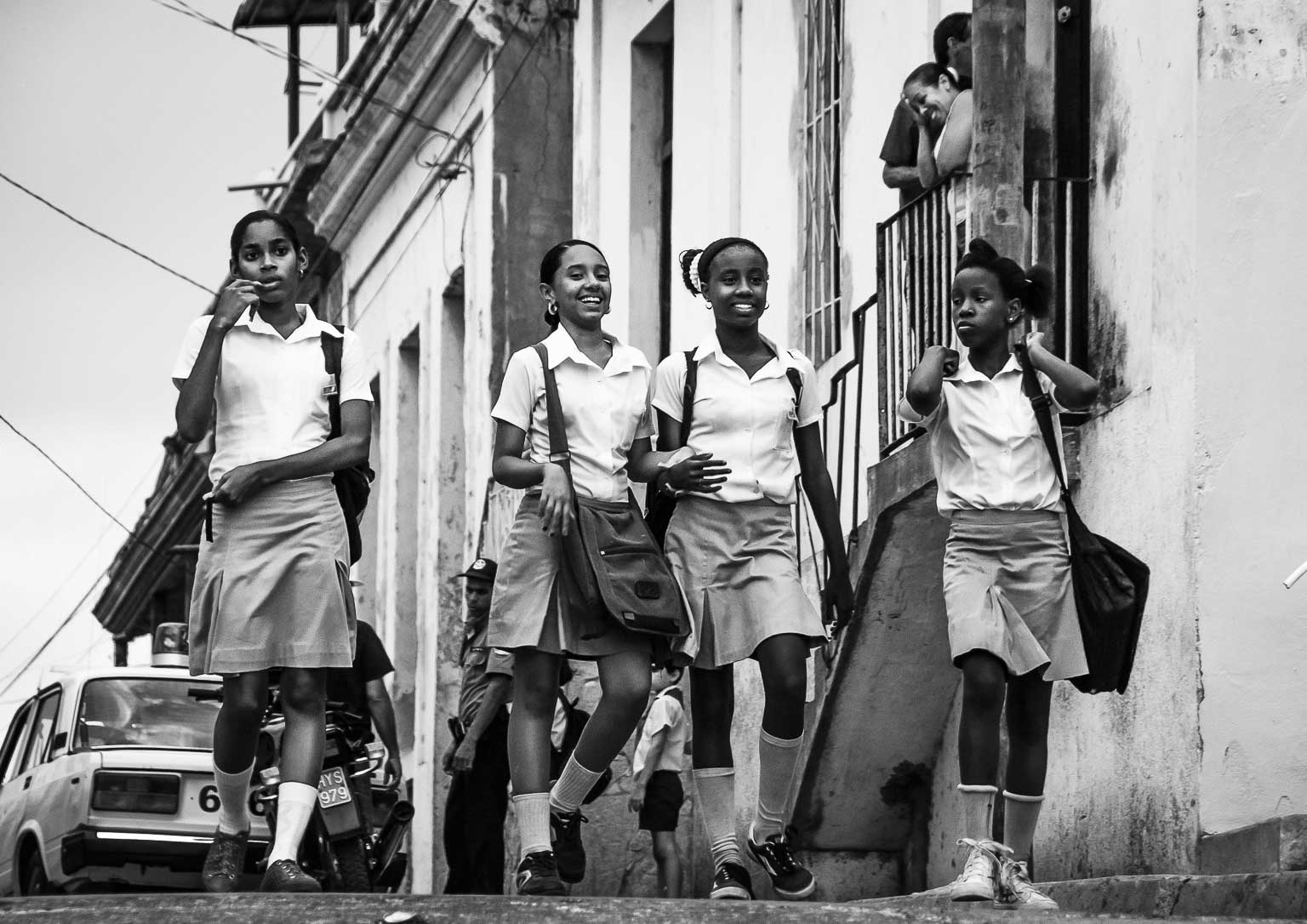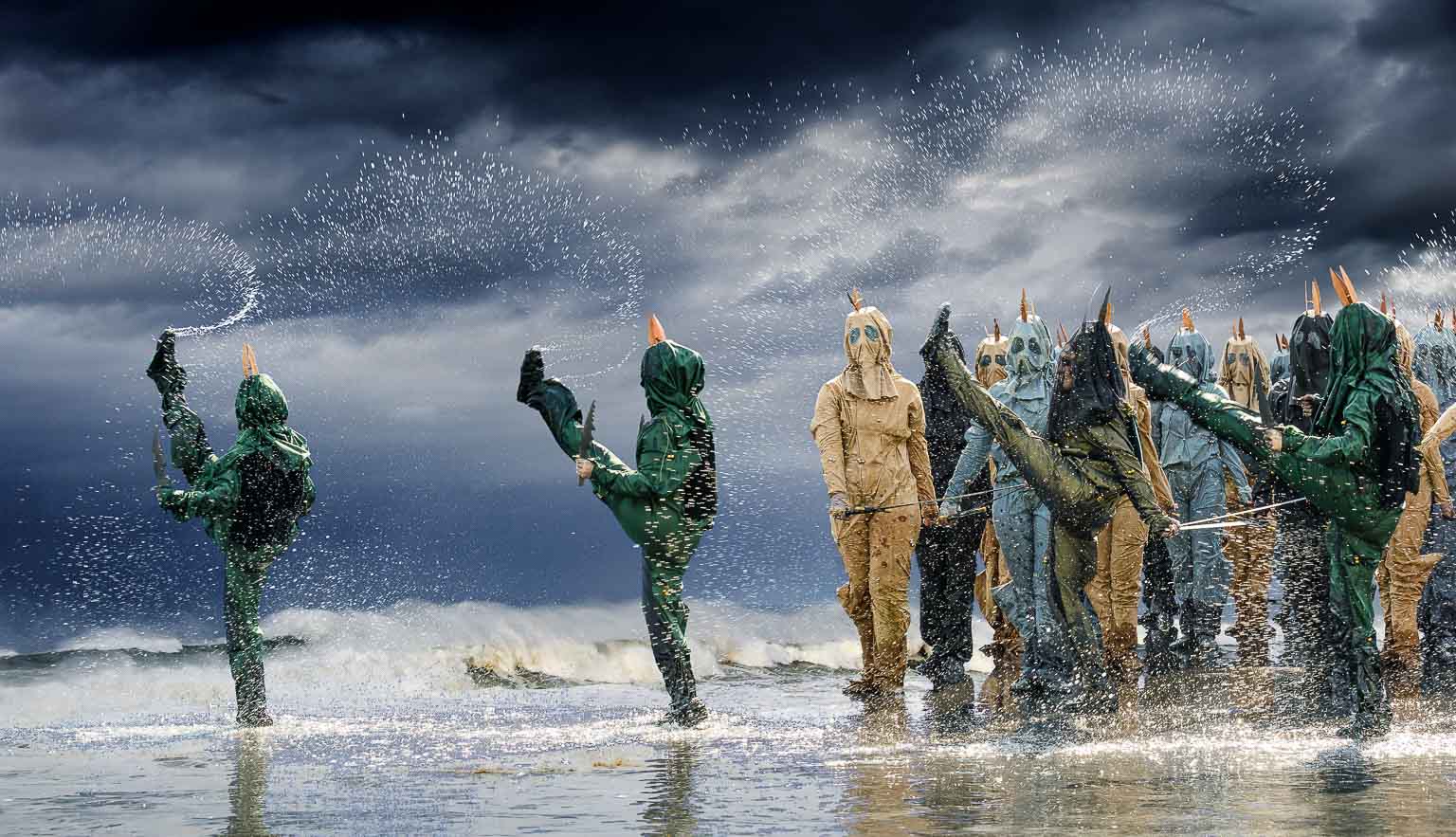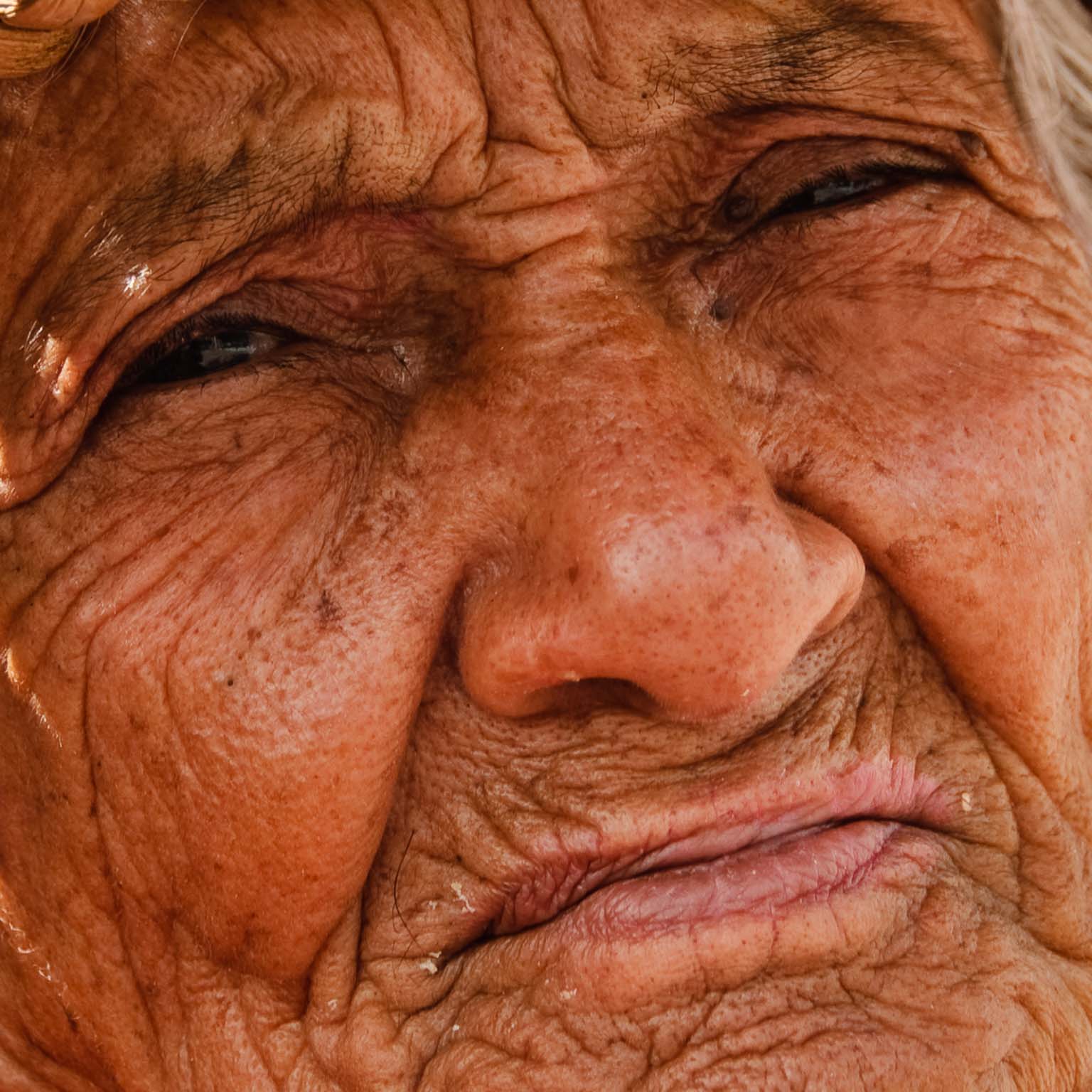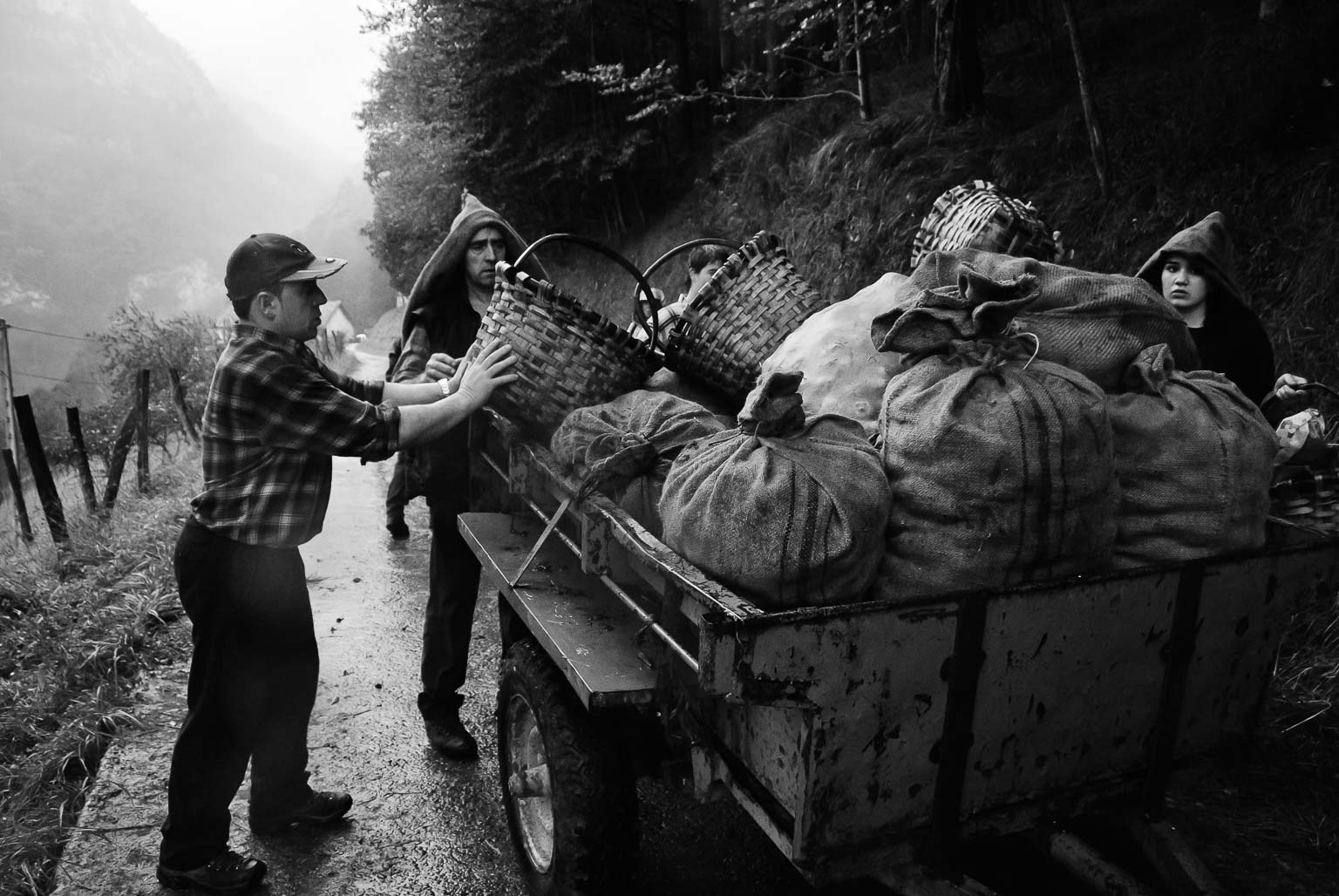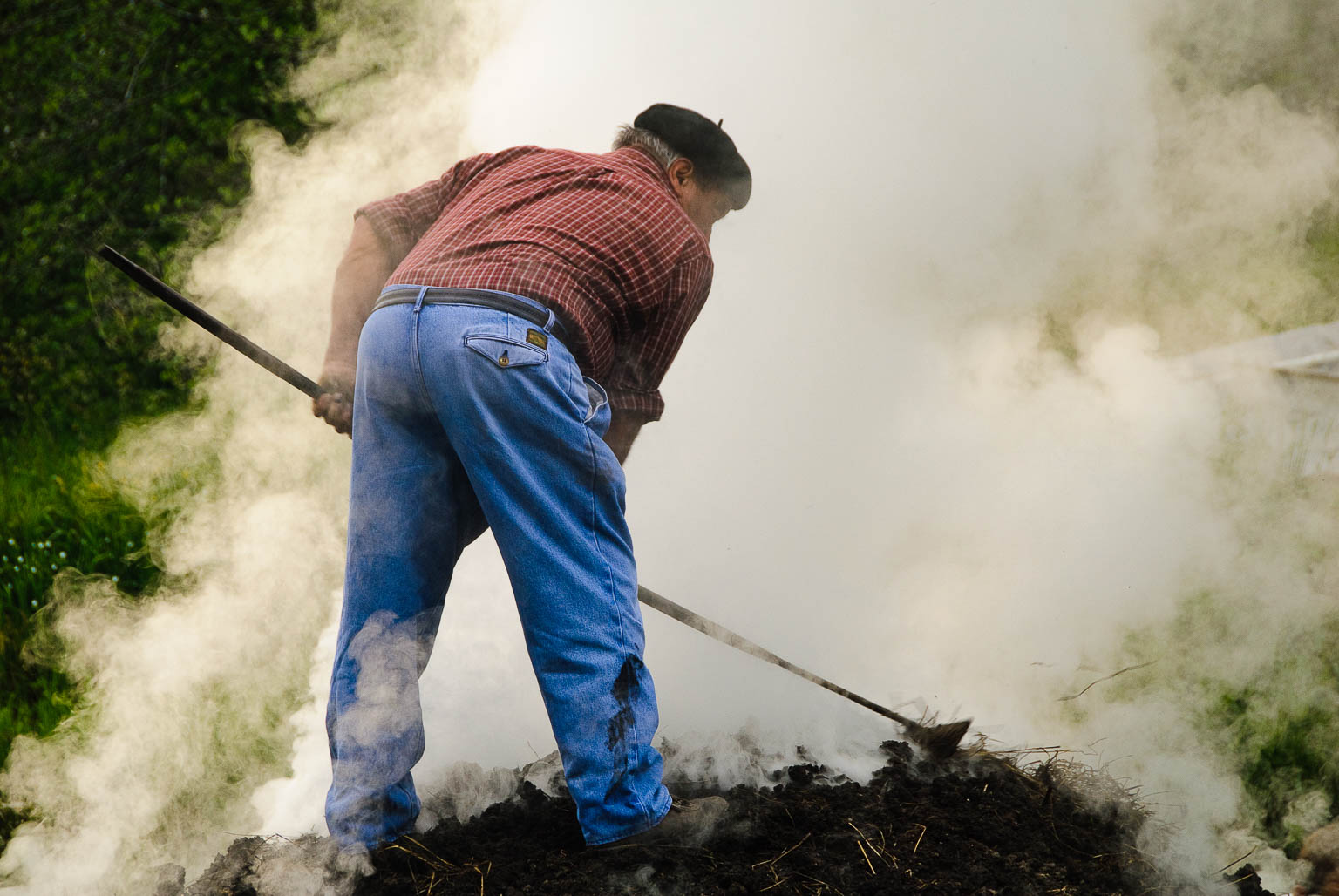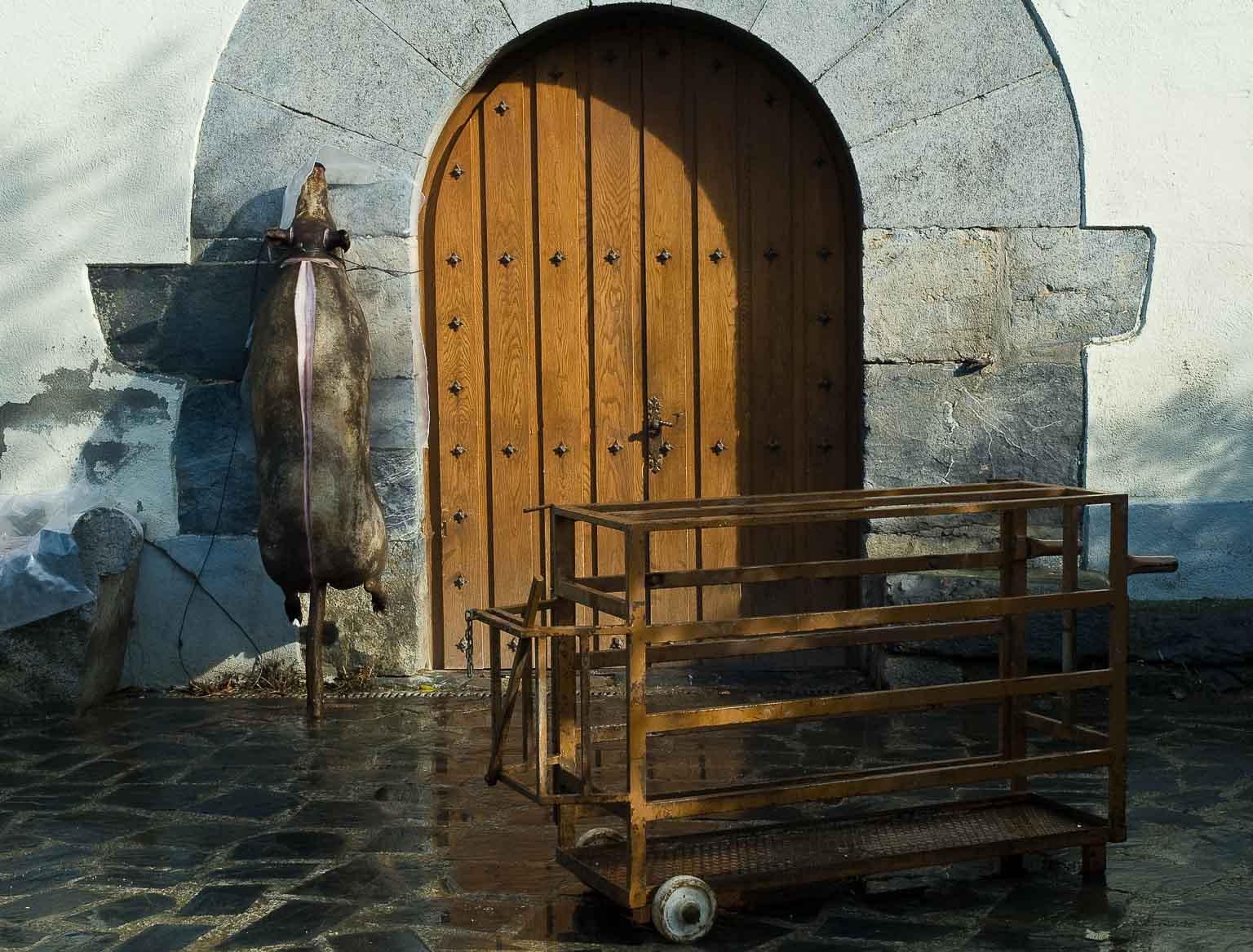Among these exhibitions, you will find here information on those related to the projects carried out by the Itxurain association of Alkiza, as part of the Itxurain, Alkiza uztartzen initiative.
Cuba in black and white
Exhibition held at Txirain Elkartea (Antigua, Donostia), from October 5 2023 to January 10 2024.
To see the pictures, click on the image above.
Igartubeiti Dantzan
Exhibition held at Igartubeiti Baserri Museoa (Ezkio-Itsaso, Gipuzkoa), from June 13 to September 30, 2019.
To see the pictures, click on the image above.
The exhibition presents a selection of photos taken in Igartubeiti during the shooting of Dantza by Telmo Esnal (Txintxua Films, 2018), as well as the costumes and props used by the dantzaris in the scenes shot on the farm that were designed and produced by the sculptor Koldobika Jauregi.
Dancing in front of the cameras: a collection of photos of Dantza
- Donostia (Gipuzkoa): Exhibition room of the Photographic Society of Gipuzkoa, from January 11th through February 6th 2019.
- Tafalla (Navarre): Tafalla Cultural Centre, from February 2nd through 21st 2019.
- Zarautz (Gipuzkoa): Photomuseum, from February 12th through March 19th 2019.
- Tolosa (Gipuzkoa): Aranburu Palace, from March 22nd through April 27th 2019.
- Alkiza (Gipuzkoa): Fagus Alkiza Interpretation Centre, from May 13th through June 30th 2019.
- Oieregi (Navarre): Bertiz, from July 4th through August 25th 2019.
- Biarritz (Labourd): La Gare du Midi, from September 3rd through 16th 2019.
- Bayonne (Labourd): L'Atalante, from August 28th through September 30th 2019.
- Zarautz (Gipuzkoa): Sanz Enea, from February 6th through March 29th 2020 (within the exhibition Koldobika Jauregi "Dantza" , along with the costumes and props used in the film).
- Andoain (Gipuzkoa): Bastero Cultural Centre, from March 31st through April 30th 2021 (within the exhibition Koldobika Jauregi "Dantza" , along with the costumes and props used in the film).
- Alkiza (Gipuzkoa): Fagus Alkiza Interpretation Centre, from October 4th through 20th 2024.
To see the pictures, click on the image above.
Dancing in front of the cameras: outline of the project
Dantza is not an ordinary film. Dantza tells us a story through dance. That story takes place in a village, in any rural village; in fact, the story could take place in any village in the world. It is also a metaphor for life and the struggle for survival, in such a way that in the development of the film the cycle runs from sowing the seed to ripening the fruit, from birth to death, at the same time that it also speaks to us about work, love and celebration.
The images presented in this exhibition have also been arranged according to the course of the story told by the film. There we have, in the first photographs, the shaman (an androgynous being: the goddess of the Sun, Amaterasu), improvising his dance in the cave in prayer of rain, imploring to the sky the water indispensable for the earth to bear its fruit. Then we see the earth awaken –as the centre of the zinta dantza, there is the tree that begins to be covered with leaves, the tree of life–; on the other hand, the abominable beings that approach it represent the plagues, mosquitoes and horseflies (ezpata dantza): after their attack, we can see the tree folded, and the fruit affected on the ground. Then comes the fire that the farmer will use to fight the plague (Bizkaiko erregelak), and then the funeral rites (irradaka), where we can appreciate the form of a cromlech symbolized by the ring of women. After the winter spring will explode, and the apple tree will dress with colorful flowers, flowers that at the end of summer will bring their fruit (sagar dantza). Later we see the fruit already collected in the press, the work, and the dance that the men perform around them (almute dantza). From the apple will come the cider, and the whole village will gather in the square, in celebration (soka dantza, galaiena, godalet dantza). Finally, we find love in the last two images (Arratiako jota).
The photographs of this exhibition have been obtained during the shooting of Dantza, a film directed by Telmo Esnal (Txintxua Films, 2018). When I was invited to take pictures in the shooting sessions, I didn't know what I was going to find, because I didn't know the world of cinema from inside and I had no idea of what situations and opportunities I would have to take photos in those sessions. But when I attended the first one, as soon as I started shooting between the chiaroscuro and the dust that the dantzaris, barefoot in front of the cameras, were lifting from the floor of the Igartubeiti farmhouse, the photographic project that I present through the exhibition began to take shape in me.
Read more: Dancing in front of the cameras: a collection of photos of Dantza
Travelling in America from solstice to solstice
This photo exhibit was prepared as one of the activities to celebrate the 40th anniversary of the Faculty of Computer Science of Donostia, and I gathered in it a small sample of the pictures made in a trip through America I did in 2016. The exhibition has been presented in the following places and dates:
- Donostia: Lobby of the Faculty of Computer Science of the UPV/EHU, from November 10th through December 22nd 2017.
- Donostia: Andrestegi exhibition room of the Carlos Santamaria Center of the UPV/EHU, from March 4th through 19th 2019.
- Vitoria-Gasteiz: Pavilion of the Araba Campus of the UPV/EHU, from April 1st through May 17th 2019.
To see the pictures, click on the image above.
The trip and the exhibition
In 2016 I was lucky enough to take a six-month trip trough America, from June to December. From Newfoundland to the mythical Ushuaia, I traveled approximately 27,000 km: Nova Scotia, Newfoundland, Quebec, Concord, New York, New Orleans, Monterrey, Mexico City, Puebla, Costa Rica, Panama, Medellín, Mompox, Cartagena, Ecuador, Trujillo, Lima, Atacama, Santiago, Araucanía, Chiloé, Bariloche, Perito Moreno, Ushuaia ... trains, buses —many buses—, cars, boats, some planes... streets, cities, towns, museums, beaches, jungle, desert, mountains, men and women ... stations, bars, hotels.
Cuba, a view from the Basque Country
Exhibition shown in Santiago de Cuba, at the UNEAC's Titón Exhibition Room, from 23th January to 5th February, 2013. Later on, some of these pictures were also shown in the Euskal Etxea (Basque Center) of Havana, at the 2013's Aberri Eguna (Fatherland Day, 2013-03-31).
To see the pictures, click on the image above.
The work presented in this exhibition is a selection of images taken in several journeys through Cuba, linked up with images obtained in Euskal Herria (Basque Country). The rear cover of El roble y la ceiba. Historia de los vascos en Cuba (Txalaparta, 2003) by Cecilia Arrozarena Uribe, Havanese of Basque descent, reads: “Among Cubans and Basques there exists a long relationship and a certain knowing look. Perhaps because both, each in their own way, are island-people, tenacious in staying alive and dignified...“. Something of that knowing look underlies also at the idea and images of this exhibition.
More in common with literature than with painting
Exhibition shown in Hondarribia, at Modotti Tailerra, from October 11th to 30th, 2011.
To see the pictures, click on the image above.
Unlike what is commonly said, I think that photography has more in common with literature than with painting. Francesc Català Roca (Photographer. Catalonia, 1922-1998).
Read more: More in common with literature than with painting
Regards 2.♀
Exhibition shown at the Computer Science Faculty of Donostia (Saint Sebastian), in December 2006.
To see the pictures, click on the image above.
Women regards caught here and there, captured by the photographer's eyes, inmortalized by means of chemicals or of the digital sensor.
Apples and cider making
Exhibition shown in the Cultural Centre of Alkiza, from 9th to 11th September 2011.
To see the pictures, click on the image above.
Apples, cider... it is well known that they are of great importance since centuries in the Basque Country.
Haystack making
Exhibition shown in the Cultural Centre of Alkiza in the autumn of 2009.
To see the pictures, click on the image above.
...Oxen, scythes, rakes, car, sled... tools so frequent until very recently in our forests and grasslands were used to lift this fern stack at Lete in Alkiza...
Charcoal making at Ikili
Exhibition shown in the Cultural Centre of Alkiza in the spring of 2009.
To see the pictures, click on the image above.
...Charcoal makers will not be seen any longer in the mountains of the Basque Country, unless for photos. Although there are still in our villages competent charcoal makers, able to lift a kiln, fire it, and keep it alive and smoky for days, charcoal making, like many other professions, will appear in the list of jobs lost in the 20th century in history books. With these pictures we would like to avoid those activities --and that living, in some way-- to be completely forgotten.
Pig slaughtering
Exhibition shown in the Cultural Centre of Alkiza in November 2008.
To see the pictures, click on the image above.
Pig slaughtering in Alkiza, in November 2008: the pig, raised and fed at Aranguren, was slaughtered in "beheko plaza", the village square; black pudding, chorizo, and so on were made at Peru house; in the end, a popular lunch took place at the pelota court.

